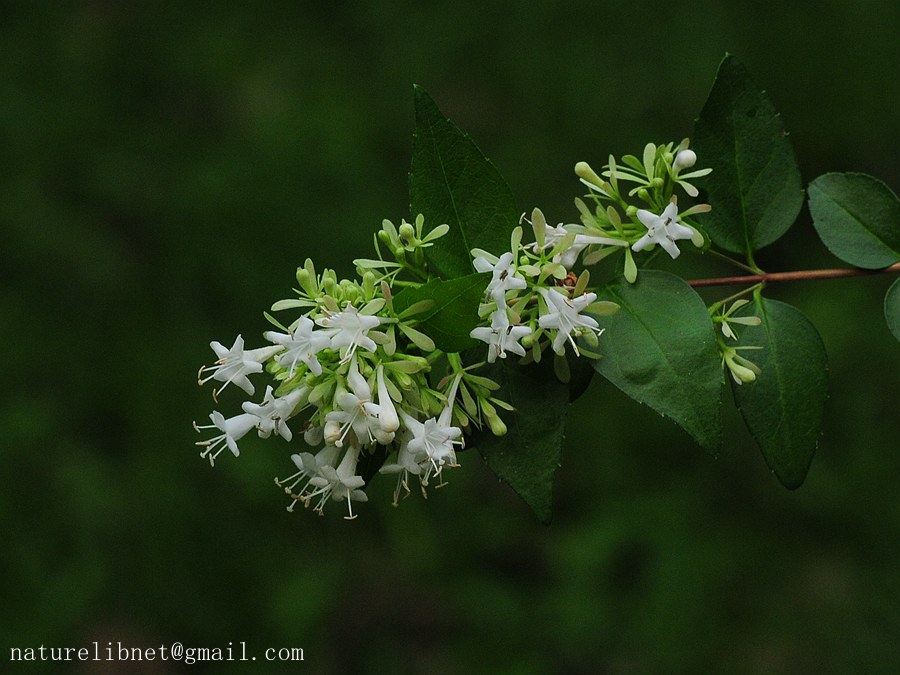糯米条 Abelia chinensis
- Scientific Name: Abelia chinensis R.Br.
- Ref: C.Abel, Narr. Journey China:376. 1818
- Synonyms:
- Abelia aschersoniana (Graebn.) Rehder
- A. cavaleriei H.Lév.
- A. hanceana Mart. ex Hance
- A. ionandra Hayata
- A. lipoensis M.T.An & G.Q.Gou
- A. rupestris Lindl.
- Linnaea aschersoniana Graebn.
- L. chinensis (R.Br.) A.Braun & Vatke
- L. rupestris (Lindl.) A.Braun & Vatke
- English Common Name: Chinese abelia
- Chinese Common Name: 糯米条 nuòmǐ∙tiáo, 华六道木 Huá liùdào∙mù, 华六条木 Huá liùtiáo∙mù
- Japanese Common Name: タイワンツクバネウツギ [台湾衝羽根空木] taiwantsukubaneutsugi
- Family: Caprifoliaceae
- Genus: Abelia
- Type Specimen: Kiang-si (江西), lacum Po-Yang (鄱阳湖), 1816年, D. Abel[C. Abel] s.n.(Holotype: BM000019930)
- Distribution: Mountains; 200-1500 m. Fujian, Guangdong, Guangxi, Guizhou, ?Henan, Hubei, Hunan, ?Jiangsu, Jiangxi, Sichuan, Taiwan, Yunnan, Zhejiang [Japan].
- Photo: 09/04/2010, Hangzhou Botanical Garden, Zhejiang
- Note: The genus Abelia is named in honour of its dicoverer, Clarke Abel, Esq. who accompanied the late Embassy to China, as Chief Medical Officer in the suite of Lord Amherst.
Shrubs, deciduous to semi-evergreen, to 2 m tall, highly branched. Young branches slender and pubescent. Leaves opposite, sometimes in whorls of 3; leaf blade ovate, 2-5 × 1-3.5 cm, abaxially sparsely pubescent, densely white villous at base of midvein and lateral veins, base rounded or cordate, margin remotely crenate-serrate, apex acute to long acuminate. Inflorescence a large terminal panicle of paired flowers (flowers opening consecutively). Flowers fragrant, with 6 oblong or lanceolate bracts at base of paired ovaries. Calyx of 5 sepals, elliptic, 5-6 mm, turning red at fruiting stage. Corolla 5-lobed, white to pink, funnelform, 10-12 mm, ca. 2 × as long as sepals, outside pubescent and gibbous at base of tube. Stamens and style long exserted; filaments slender, equal in length, inserted at base of corolla tube. Ovary cylindric, slightly compressed, pubescent, longitudinally striate; stigmas capitate. Achene crowned with persistent and slightly enlarged sepals. Fl. Aug-Sep, fr. Oct-Nov. 2n = 32. (Flora of China)
-narrativeofjourn00abel_0_0455_副本.jpg)
Narrative of a Journey in the Interior of China 1818.
